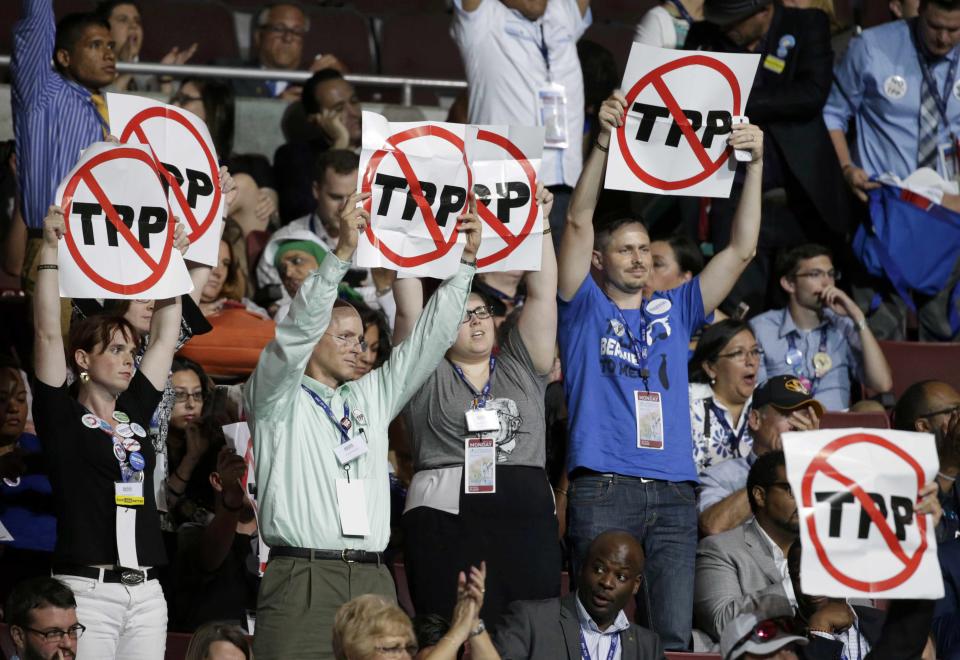This election could crush the US consumer by rolling back free trade

This is an op-ed by Hugo Uyterhoeven, the Timken Professor of Business Administration Emeritus at Harvard Business School.
The admonition “Don’t cut off your nose to spite your face” has been around since the Middle Ages. It’s folk wisdom: Don’t act against your own interests, even if it’s momentarily satisfying.
I’ve never more clearly witnessed people ignoring this advice than in the anti-free trade, pro-protectionism camps in this election. Protectionism is a pillar of Donald Trump’s campaign; it also runs strong in the Sanders/Warren wing of the Democratic Party; and even Hillary Clinton has backed away from the Trans-Pacific Partnership, a global trade deal that has the backing of the Obama administration.
As with many substantive issues in this election, the discussion about free trade and protectionism has been reduced to slogans. But make no mistake. The presidential and congressional elections will determine whether we turn the clock back on free trade—shifting the United States from an open, global, and competitive economy to a closed, nationalistic, and protected one. That would hurt far more Americans than it is supposed to help and harm middle- and lower-income people the most.
While few recognize it, the greatest beneficiary of worldwide, free-trade-fueled competition has been the US consumer, who has paid lower prices for a huge range of high-quality foreign-made goods. The resulting increase in the purchasing power of consumers’ income—combined with our highly efficient retail distribution system—has created a shopper’s paradise in this country. Because we’ve paid less for the likes of televisions, microwaves, and shoes, we’ve been able to spend more on restaurants, sporting events, and PlayStations.
The bottom line: Free trade has raised quality-of-life for most Americans and especially for lower-income families and retirees on a fixed income.
Slapping tariffs on imported goods would destroy that shopper’s paradise by driving prices up and reducing consumer purchasing power. For average Americans, who spend more of their paychecks on core needs than the rich, tariffs on necessities are, effectively, regressive income taxes that cut their spending and diminish their quality of life.
While trade barriers would cost top income earners just 3% of their buying power, according to a 2014 National Bureau of Economics Research working paper, they would cost median earners 29% and low earners a staggering 62%. To make matters worse, it would be median- and low-income workers whose jobs would be eliminated first, since US consumers would be forced to slash discretionary spending to pay the higher cost of necessities, many of which continue to be imported because there are no longer American manufacturers.
Many Americans oppose free trade, because they believe that imports killed American manufacturing jobs. It is a fact that only 8.5% of American workers are employed in manufacturing today—only a quarter of the 1951 level. But free trade didn’t cause that. Instead, US consumers must bear primary responsibility.
We spend a declining proportion of our incomes on goods and a growing proportion on services, from education and medical care to entertainment and travel. As a result, the loss of manufacturing jobs has been offset by an employment surge in the services sector, which now accounts for more than 70% of the US workforce.
In addition, our demand for low prices has forced manufacturers to use labor-saving technologies instead of higher-cost workers. Although US factory production has actually grown 20% since 2009, manufacturing employment has risen just 5%, because new factories increasingly use technology-based production processes. The truth is that the decline in manufacturing jobs would have taken place even if we’d never signed a single free trade agreement.
So when politicians call for protectionist policies to reverse the hollowing out of US manufacturing, they are offering a self-destructive solution. They threaten the economic well-being of 325 million American consumers who benefit from free trade in hopes of helping a few million workers who have lost their jobs to imports.
The plight of those workers (and their economically depressed communities) is a significant problem we must address. It demands direct, creative, and effective solutions. But raising US trade barriers won’t produce new manufacturing jobs anytime soon, if at all.
To make matters worse, as other nations impose tariffs in response to ours—making our exports more expensive for their consumers—even more American factory workers will lose their jobs. And as reduced consumer purchasing power causes significant cutbacks in discretionary spending, the biggest job losses may occur among the 103 million American service workers. Thus, our entire economy will be weakened.
If that’s not spiting ourselves, I don’t know what is.

 Yahoo Finance
Yahoo Finance 